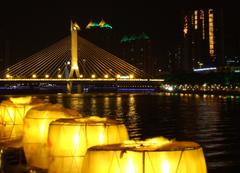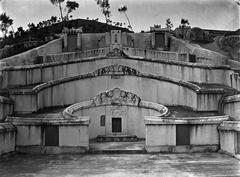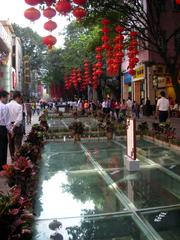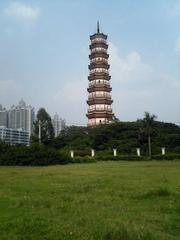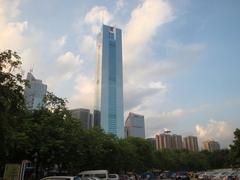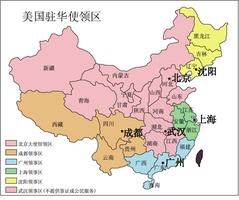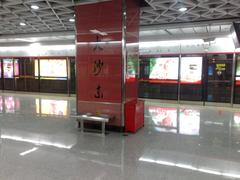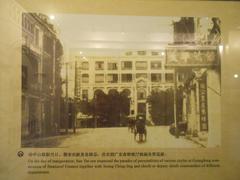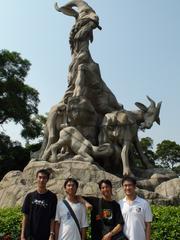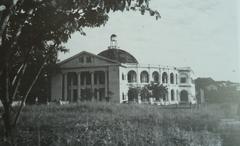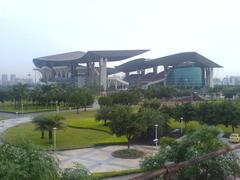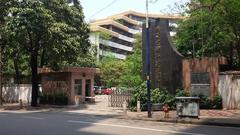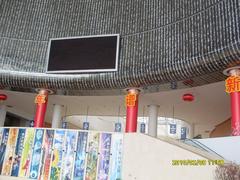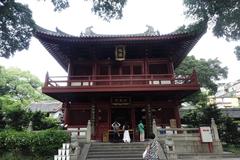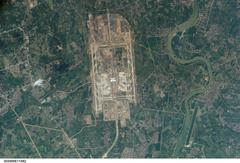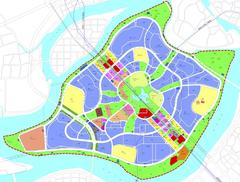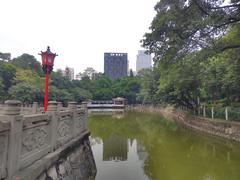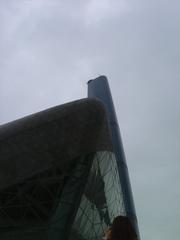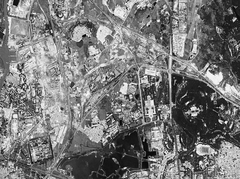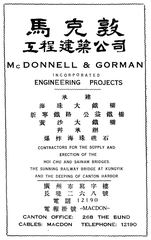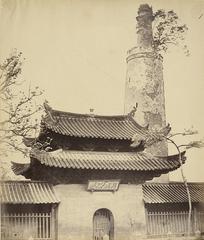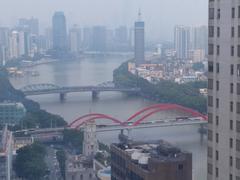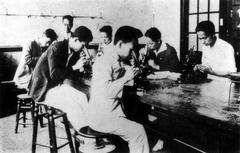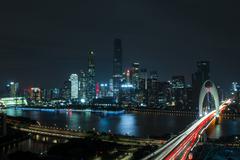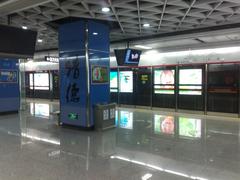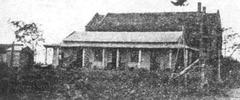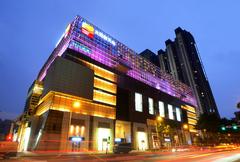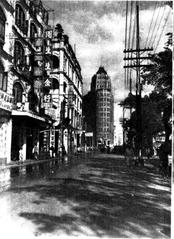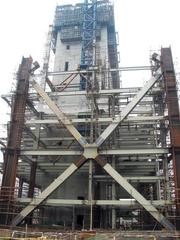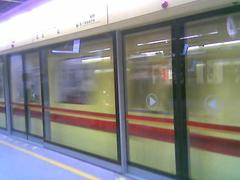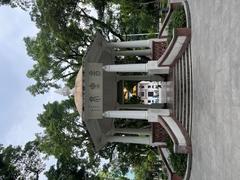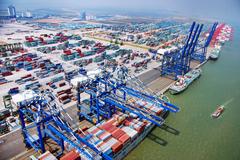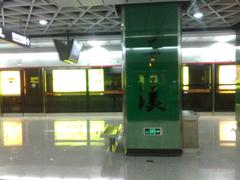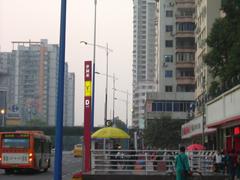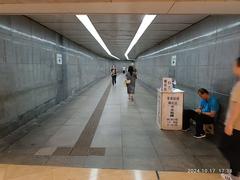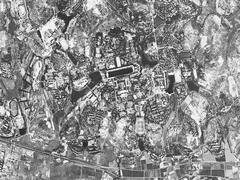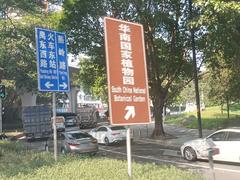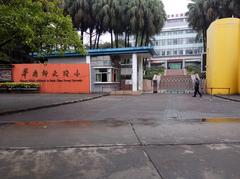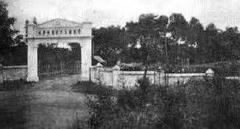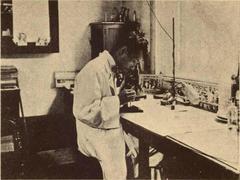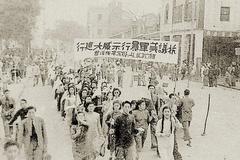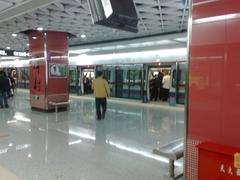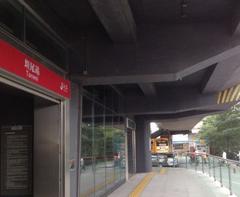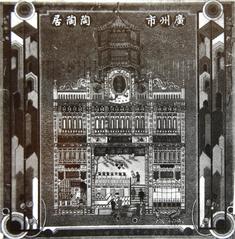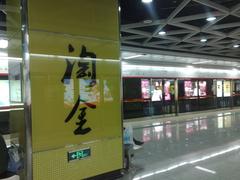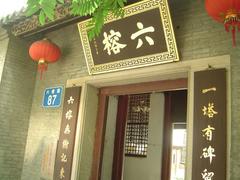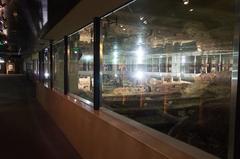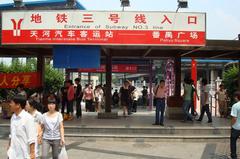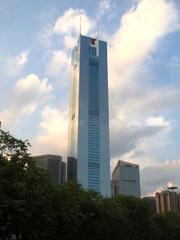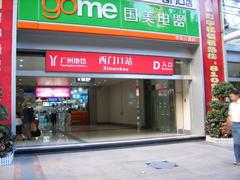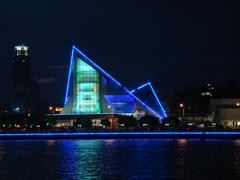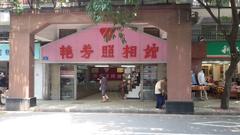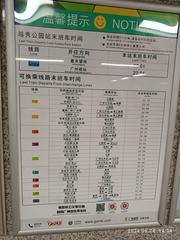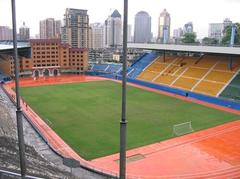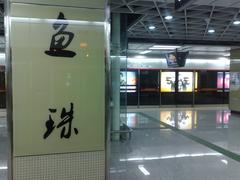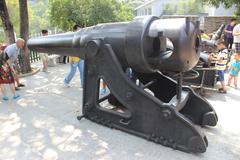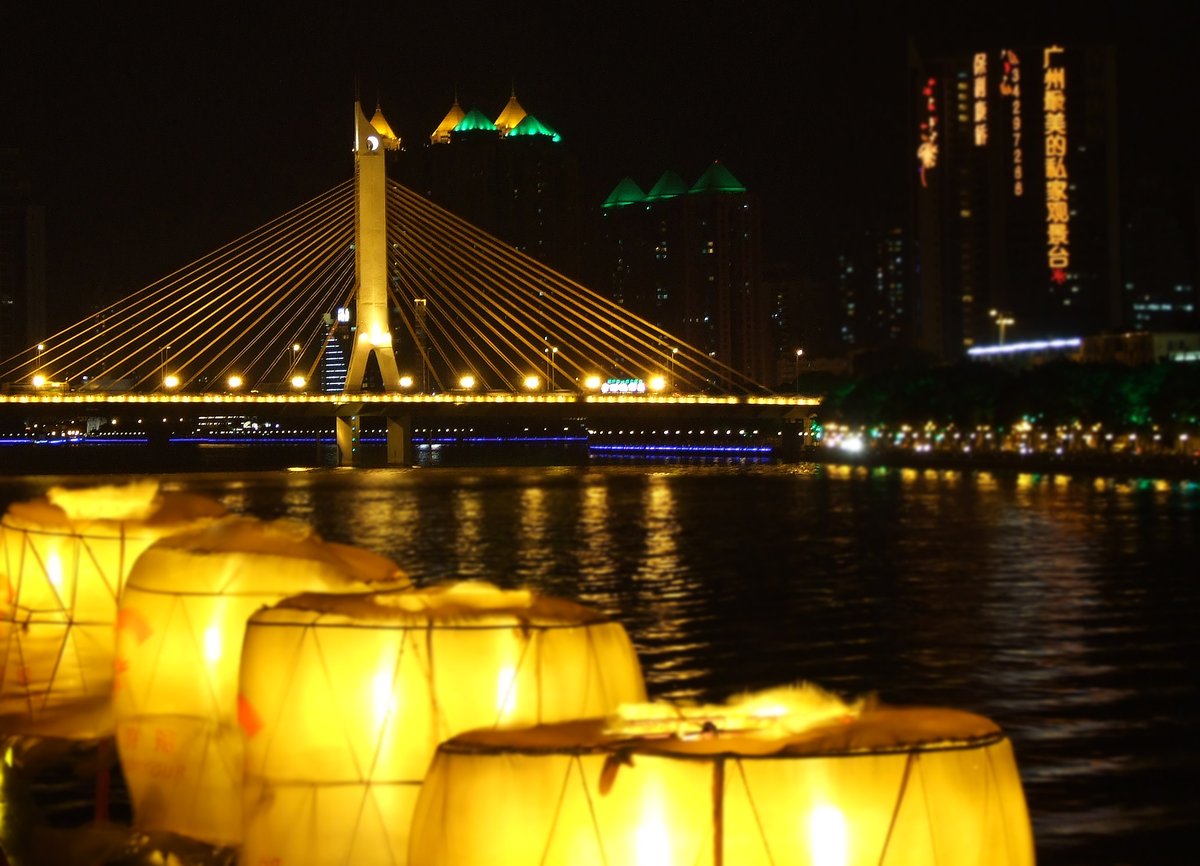
Haiyin Bridge Visiting Hours, Tickets, and Travel Guide in Guangzhou
Date: 15/06/2025
Introduction to Haiyin Bridge and Its Significance
Haiyin Bridge (海印大桥) is a prominent symbol of Guangzhou, spanning the Pearl River and connecting the historic Yuexiu district with the dynamic Haizhu district. Since its completion in 1988, the bridge has played a crucial role in Guangzhou’s modernization, serving both as a key transportation artery and a celebrated public space. Distinguished by its elegant cable-stayed design, white pylons, and sweeping steel cables, the bridge is an engineering marvel and a popular destination for leisure, photography, and cultural events.
The bridge is open to pedestrians and vehicles 24 hours a day, with no ticket required for entry. Its accessible design welcomes both locals and visitors to enjoy panoramic views of the city, especially when the bridge’s illumination transforms the riverfront into a dazzling nightscape. Nearby, attractions such as Haiyin Park, Canton Tower, Shamian Island, and the Pearl River promenade enrich the experience, offering insight into Guangzhou’s rich heritage and vibrant urban life.
This comprehensive guide provides all you need to plan your visit—covering the bridge’s history, architecture, visitor logistics, transport options, accessibility, and nearby points of interest. Whether you are an architecture enthusiast, a history buff, or a traveler seeking memorable river views, Haiyin Bridge is a must-visit highlight of Guangzhou. For more details, see sources such as PRC Magazine, Trip.com, and Wanderlog.
Table of Contents
- Introduction
- Origins and Historical Context
- Engineering and Architectural Features
- Role in Urban Development
- Visitor Information
- Cultural and Architectural Significance
- Engineering Innovations
- Activities and Events
- Nighttime Lighting Experience
- Transportation and Accessibility
- Nearby Attractions
- Photographic Spots & Special Events
- Practical Visitor Tips
- Frequently Asked Questions (FAQ)
- Conclusion & Recommendations
- Sources
Origins and Historical Context
Haiyin Bridge was completed in 1988, during a period of rapid urban expansion and modernization in Guangzhou. Prior to its construction, ferry services and older bridges such as Haizhu Bridge were insufficient for the city’s growing transportation needs. Haiyin Bridge addressed these challenges by providing a modern, high-capacity crossing that spurred development in adjacent districts and helped transform Guangzhou into a southern economic powerhouse.
Engineering and Architectural Features
Haiyin Bridge is a cable-stayed structure measuring approximately 1,000 meters in length with a main span of 360 meters. Its six lanes of vehicular traffic are flanked by wide pedestrian walkways, providing safe passage and spectacular river views. The bridge’s white pylons and sleek steel cables have become an integral part of Guangzhou’s skyline. Constructed from reinforced concrete and steel, the bridge is designed for durability and visual impact, particularly when illuminated at night (PRC Magazine).
Role in Urban Development
By improving cross-river connectivity, Haiyin Bridge catalyzed the growth of Yuexiu and Haizhu districts. Yuexiu, the city’s administrative center, expanded its commercial and residential spaces, while Haizhu transitioned from industrial uses to vibrant neighborhoods and recreational zones. The bridge corridor, including Haiyin Park, now serves as a lively public space blending infrastructure with recreation and cultural activities.
Visitor Information
Visiting Hours & Tickets
- Hours: Open 24 hours for both pedestrians and vehicles.
- Tickets: No tickets or entry fees required; both the bridge and adjacent Haiyin Park are free to visit.
Guided Tours & Special Events
While official guided tours on the bridge are rare, many city tours include Haiyin Bridge as a highlight due to its architectural and cultural significance. The bridge is a focal point during the annual Pearl River Light Show, when its illumination attracts crowds for photography and celebration.
Accessibility
Haiyin Bridge and its surroundings are equipped with ramps and smooth walkways to accommodate visitors with disabilities. Pedestrian walkways are separated from traffic for safety, and nearby metro stations (Haizhu Square on Line 2 and Donghu on Line 6) are wheelchair-accessible.
Cultural and Architectural Significance
Design Inspiration
The bridge’s design incorporates Lingnan cultural motifs, with a distinctive curved and inclined form reminiscent of the Cantonese opera’s “water sleeve” and the ancient Qin instrument. This cultural integration is reflected in the landscape elements along the deck, which draw inspiration from Guangzhou’s traditional water flower markets (PRC Magazine).
Panoramic Views
Slender structural elements and open balustrades offer unobstructed views of the Pearl River and city skyline, making Haiyin Bridge a prime location for sightseeing and photography (Designboom).
Engineering Innovations
The bridge features a curved, inclined arch with a box girder structure, combining aesthetic appeal with robust engineering. High-strength steel and slip-resistant decking ensure durability and safety in Guangzhou’s humid climate (Amazing Architecture).
Activities and Events
Haiyin Bridge is not just a transit route; it’s a popular public space hosting:
- Morning jogs and leisurely walks
- Social gatherings and group exercises
- Outdoor concerts and cultural festivals
- Major event viewing (e.g., marathons, fireworks)
Photography enthusiasts will find ideal vantage points for capturing sunrise, sunset, and the illuminated bridge at night (PRC Magazine).
Nighttime Lighting Experience
The bridge’s integrated LED lighting highlights its curves and structure after dark, creating a striking waterfront landmark visible from river cruises and city viewpoints. This enhances both safety and the city’s vibrant nighttime atmosphere (PRC Magazine).
Transportation and Accessibility
By Metro
- Nearest Station: Donghu Station (Line 6), 8-minute ride from Yide Lu Station. Trains depart every five minutes; fare is 7–8 RMB (Rome2Rio).
- Accessibility: Metro stations are equipped with elevators, escalators, and tactile paving.
By Taxi
- Travel Time: Approximately 4 minutes from central Guangzhou, fare 15–30 RMB (Rome2Rio).
- Apps: Didi Chuxing and other ride-hailing services available.
By Bus
- Payment: Use Lingnan Pass (Yang Cheng Tong); multiple routes serve the area.
- Accessibility: Many buses are low-floor, but accessibility varies (Trip.com).
Walking and Cycling
- Distance: About 5 km from city center; bike rentals via Mobike and HelloBike apps.
- Infrastructure: Wide sidewalks, pedestrian crossings, and public bikes available.
From the Airport
- Metro: Line 3 from Baiyun International Airport to Tiyu Xilu, transfer to Line 6 for Donghu Station.
- Taxi: 45–60 minutes depending on traffic (Trip.com).
Nearby Attractions
Pearl River
A hub of evening activity and the route for popular night cruises, offering views of illuminated city landmarks (Living Nomads).
Canton Tower
Guangzhou’s tallest and most iconic structure, featuring observation decks and thrill rides, about 3 km from the bridge (The Broke Backpacker).
Flower City Square
The city’s largest public square, surrounded by modern buildings and cultural venues (China Discovery).
Guangzhou Opera House
A contemporary architectural masterpiece by Zaha Hadid, with regular performances and guided tours (Rome2Rio).
Shamian Island
A peaceful enclave with colonial-era architecture, cafes, and gardens, about 2 km from Haiyin Bridge (China Discovery).
Beijing Road & Shangxiajiu Streets
Bustling pedestrian zones for shopping, dining, and street food (China Discovery).
White Cloud Mountain (Baiyun Shan)
A scenic area for hiking and panoramic views, about 10 km from the bridge (The Broke Backpacker).
Photographic Spots & Special Events
Sunset and nighttime provide the best light for photos. The bridge is a major feature during the Guangzhou International Light Festival and other city events.
Practical Visitor Tips
- Lingnan Pass: For metro, bus, and ferry convenience (Trip.com).
- Language: English signage is common, but basic Mandarin or Cantonese helps.
- Weather: Visit October–March for the most comfortable climate.
- Safety: The area is safe, but standard precautions are advised, especially at night.
- Accommodation: Numerous hotels are nearby, including the White Swan Hotel and Guangdong Victory Hotel (Rome2Rio).
Frequently Asked Questions (FAQ)
Q: What are Haiyin Bridge’s visiting hours?
A: 24 hours a day, free access.
Q: Are tickets required?
A: No, the bridge is freely accessible.
Q: Is the bridge wheelchair accessible?
A: Yes, with wide sidewalks and accessible metro stations nearby.
Q: What is the best time to visit?
A: Early mornings and evenings for comfortable weather and beautiful lighting.
Q: How do I get there from the airport?
A: Metro Line 3 to Tiyu Xilu, transfer to Line 6 for Donghu Station; or take a taxi for direct access.
Conclusion & Visitor Recommendations
Haiyin Bridge stands as a testament to Guangzhou’s progress, harmoniously blending engineering innovation with cultural heritage. With free, unrestricted access and comprehensive amenities for all visitors, the bridge offers panoramic views, vibrant nighttime scenes, and proximity to major attractions—including Canton Tower, Shamian Island, and Pearl River cruises.
To maximize your visit, plan for early morning or evening, leverage Guangzhou’s accessible public transit, and explore the nearby historical and cultural sites. Download the Audiala app for real-time updates, itineraries, and exclusive travel insights.
Haiyin Bridge not only connects two districts; it bridges Guangzhou’s rich history with its dynamic present, inviting all visitors to experience the city’s spirit of innovation and tradition.
Sources
- PRC Magazine
- Designboom
- Wanderlog
- Trip.com
- Rome2Rio
- Living Nomads
- Amazing Architecture
- China Discovery
- The Broke Backpacker
